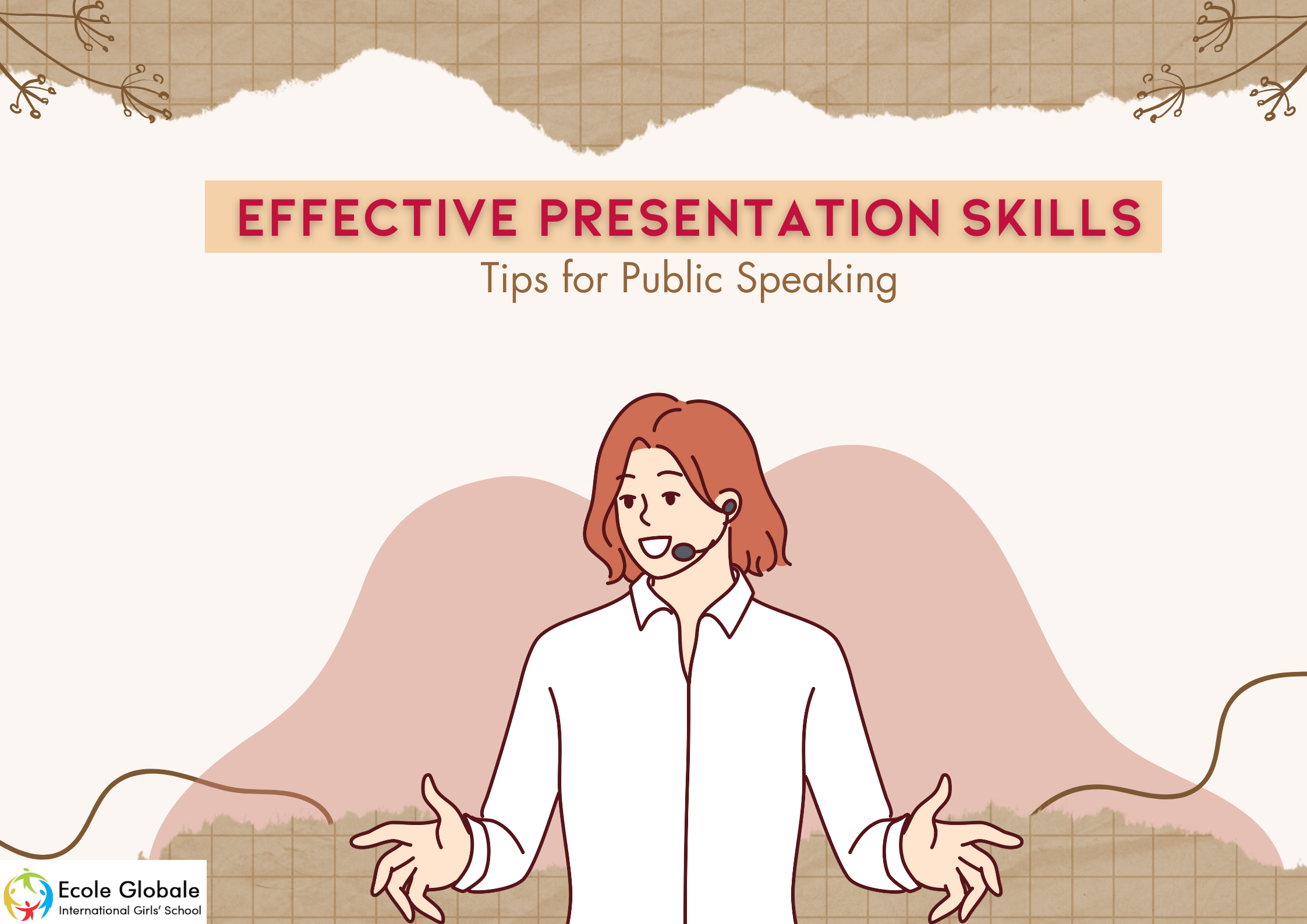Public speaking is a crucial skill for students to master, and effective presentation skills can make a significant impact on their academic and professional success. In this comprehensive guide, we will explore the key components of delivering compelling and impactful presentations.
We’ll begin by defining what effective presentation skills entail and discussing why they are essential for students. Additionally, we’ll provide an overview of the tips and strategies that will be covered in detail throughout the guide.
Effective presentation skills go beyond mere verbal communication; they encompass a range of attributes that contribute to successful public speaking. These skills are not only valuable in academic settings but also in various professional and personal scenarios where clear and persuasive communication is paramount.
Tips for Students in Public Speaking
Understanding Your Audience

One of the foundational elements of effective presentation skills is understanding your audience. Identifying the target audience allows speakers to tailor their message to meet the specific needs and expectations of their listeners.
Whether presenting to classmates, professors, or a broader audience, students must consider the demographics, interests, and knowledge levels of their audience.
Adapting communication styles to the audience is equally crucial. Different audiences may require varying levels of formality, technical detail, or conversational tone.
Recognizing cultural differences is another aspect that students need to be mindful of, as cultural nuances can significantly impact how a message is received. Sensitivity to diverse perspectives enhances the effective presentation skills and fosters a connection with the audience.
Clarity in Message Delivery

Crafting a clear and concise message is fundamental to effective presentation skills. A well-organized and coherent presentation structure helps the audience follow the content and understand the key points.
Whether using a traditional linear structure or a more creative approach, clarity should be a top priority. Organizing content effectively involves arranging information in a logical sequence, with a clear introduction, body, and conclusion.
This ensures that the audience can easily follow the speaker’s train of thought. Additionally, the use of visual aids, such as slides or props, can enhance clarity by providing visual reinforcement to the verbal message. However, it’s important to use visual aids judiciously and avoid overwhelming the audience with excessive information.
Verbal and Non-Verbal Communication

Verbal and non-verbal communication are integral components of effective presentation skills. The tone and modulation of one’s voice play a crucial role in conveying emotions, emphasis, and engagement. A speaker’s body language, including gestures, posture, and facial expressions, also significantly impacts the audience’s perception.
Maintaining eye contact is a powerful non-verbal communication technique. It fosters a sense of connection between the speaker and the audience, conveying confidence and sincerity.
A speaker who avoids eye contact may appear disinterested or lacking in conviction. Therefore, mastering both verbal and non-verbal communication is essential for creating a positive and impactful presentation experience.
Confidence Building Techniques

Confidence is key to delivering a successful presentation, but it is a skill that often requires intentional development. Overcoming nervousness and anxiety is a common challenge for students, and various techniques can help build confidence in public speaking.
Practicing and rehearsing the presentation multiple times before the actual delivery is a proven method for boosting confidence. This not only familiarizes the speaker with the content but also helps refine the delivery style and identify areas for improvement.
Positive visualization, where the speaker envisions a successful presentation, can also contribute to building confidence by creating a positive mindset.
Engaging the Audience

An engaging presentation captivates the audience and makes the information more memorable. Interactive techniques, such as posing questions, encouraging participation, and incorporating activities, help break the monotony and involve the audience actively.
Asking questions and inviting participation not only maintains the audience’s interest but also allows for a more dynamic and two-way communication process.
Incorporating stories and examples into the presentation provides real-world context, making the content relatable and engaging. By fostering a connection with the audience, students can create a more impactful and memorable presentation experience.
Handling Questions and Feedback

The ability to handle questions and feedback gracefully is an essential aspect of effective presentation skills. Preparing for potential questions demonstrates thorough knowledge of the subject matter and enhances the speaker’s credibility.
Responding to challenging questions requires a diplomatic and thoughtful approach. Acknowledging the question, providing a concise and accurate response, and remaining composed contribute to a positive impression.
Accepting and utilizing constructive feedback is equally important for continuous improvement. Constructive criticism offers valuable insights that can guide future presentations and enhance overall communication skills.
Technical Aspects of Presentation

In the digital age, technical proficiency is increasingly important in presentations. Familiarity with presentation tools, such as PowerPoint or other software, is essential for creating visually appealing and professional-looking slides. Students should also be proficient in using audio-visual equipment and be prepared to troubleshoot potential technical issues.
Testing equipment in advance ensures a smooth presentation experience. Technical glitches can disrupt the flow of a effective presentation skills and undermine the speaker’s credibility.
By addressing technical aspects with diligence and preparation, students can focus on delivering their message effectively without unnecessary distractions.
Time Management

Effective time management is a critical skill in public speaking. Setting a realistic time frame for the presentation allows speakers to cover the content adequately without rushing or exceeding the allotted time.
Practicing pacing and timing during rehearsals helps speakers become more aware of their speaking speed and enables them to adjust as needed. Allowing time for questions and answers (Q&A) is another important aspect of time management.
Anticipating the duration of the Q&A session ensures that the presentation stays within the allotted time frame. By mastering time management, students can deliver polished and well-paced presentations that respect both their time and that of the audience.
Continuous Improvement

The journey to effective presentation skills is an ongoing process of learning and improvement. Seeking feedback after presentations is a valuable practice that provides insights into the strengths and areas for development.
Constructive feedback from peers, instructors, or mentors can highlight aspects of the presentation that may not be immediately apparent to the speaker. Reflecting on personal performance is another key component of continuous improvement.
Analyzing what worked well and identifying areas for growth allows students to refine their approach and enhance their effective presentation skills over time. By embracing a mindset of continuous improvement, students can evolve into confident and compelling speakers.
Conclusion
In conclusion, mastering the art of public speaking is a transformative skill for students, offering benefits that extend beyond the academic realm. Effective presentation skills encompass a range of elements, from understanding the audience to delivering a clear and engaging message, and from building confidence to handling questions adeptly.
This comprehensive guide has delved into the intricacies of each aspect, providing practical tips and strategies for students to enhance their effective presentation skills. By applying these insights, students can navigate the challenges of public speaking with confidence and poise, ultimately becoming effective communicators in both academic and professional settings.
Encouraging ongoing practice and improvement is the key to sustained success in public speaking. Reinforcing the importance of effective presentation skills for students empowers them to communicate their ideas with impact, fostering success in academia and beyond.
As students embark on their journey to becoming adept presenters, they have the opportunity to refine not only their communication skills but also their ability to influence and inspire others through the art of public speaking.










